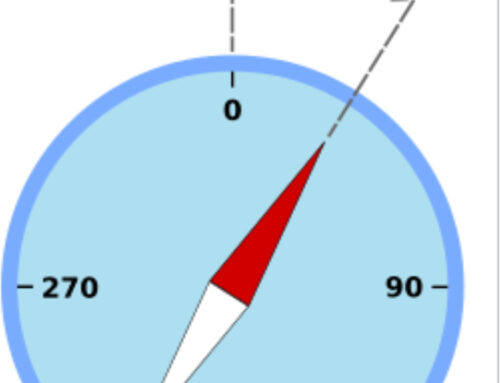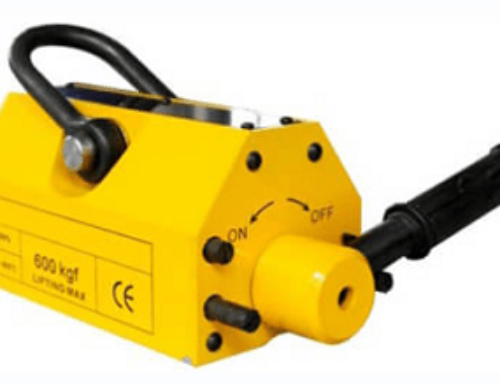If you’re working with NdFeB magnets, understanding their density isn’t just a detail—it’s a game changer. Why? Because NdFeB magnet density directly impacts performance, strength, and how well they fit your application. Whether you’re an engineer designing precision motors, a buyer sourcing reliable materials, or a hobbyist fine-tuning a project, knowing the ins and outs of NdFeB magnet density helps you make smarter choices. In this guide, we’ll cut through the noise and get straight to what matters about density—how it’s measured, why it varies, and what it means for your magnets’ real-world power. Ready to get the facts on one of the most crucial properties of these powerful magnets? Let’s dive in.
What is NdFeB Magnet Density
Density in the context of NdFeB magnets refers to the mass of the magnet material per unit volume, typically expressed in grams per cubic centimeter (g/cm³). It reflects how tightly the atoms are packed within the neodymium-iron-boron alloy, influencing both the weight and performance of the magnet.
Typical Density Range of NdFeB Magnets
NdFeB magnets generally have a density ranging from 7.4 to 7.6 g/cm³, depending on their specific composition and manufacturing process. This density is higher than many other permanent magnet materials, contributing to their powerful magnetic properties despite their relatively small size.
| Magnet Type | Typical Density (g/cm³) |
|---|---|
| NdFeB | 7.4 – 7.6 |
| SmCo (Samarium Cobalt) | 8.0 – 8.4 |
| AlNiCo | 7.2 – 7.4 |
| Ferrite | 5.0 – 5.3 |
Difference Between Density and Related Properties
- Density vs. Volume Mass: While often used interchangeably, volume mass specifically refers to the total mass per volume including any voids or pores, whereas density typically assumes a solid, uniform material.
- Density vs. Magnetic Flux Density: Density is a physical property related to mass and volume, whereas magnetic flux density (measured in Tesla or Gauss) describes the strength of the magnetic field produced by the magnet.
- Density vs. Weight and Size: Density influences the weight of the magnet but is independent of its physical dimensions.
Understanding NdFeB magnet density helps in designing compact, efficient magnets for high-performance applications including motors, sensors, and electronic devices. For more on the production and physical characteristics of NdFeB magnets, visit NBAEM’s guide on how to make NdFeB magnet.
Factors Influencing the Density of NdFeB Magnets
Several factors shape the density of NdFeB magnets, starting with their composition. The exact mix of neodymium, iron, boron, and other alloying elements changes the overall weight and compactness of the magnet. Tweaking these proportions can adjust the density to match specific needs.
Manufacturing steps also play a big role. Processes like sintering—where powdered metals are heated to fuse particles—and compaction, which presses the material into shape, impact how tightly packed the magnet material becomes. More effective sintering and compaction generally create magnets with higher density.
Porosity and the magnet’s microstructure are key too. If the magnet has tiny pores or gaps inside, it lowers the density because those pockets take up space without adding weight. The finer and more uniform the microstructure, the denser and stronger the magnet usually is.
Together, these factors determine the physical density and influence the magnet’s performance in real-world uses.
The Relationship Between Density and Magnetic Performance
Density plays a crucial role in how well NdFeB magnets perform. Higher density means fewer pores and voids inside the magnet, which directly impacts key magnetic properties like magnetic flux density, coercivity, and energy product.
- Magnetic flux density (Br) tends to be higher in denser magnets, resulting in stronger magnetic fields.
- Coercivity (resistance to demagnetization) also improves because a compact internal structure supports better magnetic stability.
- Energy product (maximum stored energy), a measure of a magnet’s overall strength and efficiency, increases with denser material.
When these properties improve, the magnet’s overall strength and efficiency rise. This means the magnet can deliver more power in smaller sizes, which is critical in modern applications.
For example, in electric motors and sensors, denser NdFeB magnets provide better torque and precision without increasing weight or volume. This helps optimize performance in compact devices and high-efficiency systems often used in U.S. industries, from automotive to consumer electronics.
For more on magnet magnetic properties and their impact, see What is a Permanent Magnet for a deeper dive.
Comparing NdFeB Magnet Density With Other Rare Earth Magnets
When comparing the density of NdFeB magnets to other rare earth magnets, it’s clear that NdFeB magnets generally have a higher density. Typical NdFeB magnets have a density range around 7.4 to 7.6 g/cm³. In contrast, Samarium Cobalt (SmCo) magnets usually sit between 7.7 and 8.4 g/cm³, slightly denser due to their different alloy composition. AlNiCo magnets are less dense, typically around 7.2 g/cm³, while Ferrite magnets are much lighter with densities near 5.0 g/cm³.
Each type offers distinct advantages in industrial use because of these differences:
- NdFeB magnets provide a great balance of high magnetic power and moderate density, making them ideal for compact, high-performance applications like electric motors.
- SmCo magnets, though denser, offer better temperature stability and corrosion resistance. Their higher density sometimes means heavier components in some designs.
- AlNiCo magnets are known for excellent temperature performance but lower magnetic strength and medium density, which fits well in specialized industrial settings.
- Ferrite magnets are the most lightweight and cost-effective, but their lower density corresponds to weaker magnetic strength, limiting their use in high-efficiency applications.
In industrial environments, the density of NdFeB magnets proves beneficial for delivering powerful magnetic forces in smaller, lighter packages. However, higher density also means the magnets can be heavier and more brittle than alternatives like Ferrite. Manufacturers must balance these factors based on the application’s weight limits, strength needs, and environmental conditions.
For a deeper dive into the role of magnets in tech, check out our guide on Permanent Magnet Applications in Modern Technology.
Applications Where NdFeB Magnet Density is Critical
NdFeB magnet density plays a major role in several key industries where performance and reliability are critical. Here’s where density really matters:
-
Electric Vehicles and E-mobility
High-density NdFeB magnets ensure stronger magnetic fields, improving motor efficiency and range. In EV motors, this means more power in a smaller package, which is crucial for compact, lightweight vehicle designs.
-
Renewable Energy including Wind Turbines
Wind turbine generators rely on dense NdFeB magnets to maximize magnetic flux density and energy output. Denser magnets help improve generator performance and durability, supporting longer turbine lifespan and better energy production.
-
Electronics and Consumer Devices
From smartphones to headphones, the small size and high strength of dense NdFeB magnets allow manufacturers to create lighter, more powerful devices without sacrificing battery life or user experience.
-
Medical Devices and Imaging Technology
Precision and reliability are key here. Dense NdFeB magnets are used in MRI machines and other imaging equipment where strong magnetic fields are necessary to produce high-quality images.
-
Aerospace and Defense Industries
Weight is a big factor in aerospace. Using NdFeB magnets with optimized density helps reduce overall component weight while maintaining or improving magnetic strength—vital for sensors, actuators, and defense-related electronics.
Each of these applications depends on carefully controlled magnet density to deliver best-in-class performance and meet strict industry standards. For more on magnetic components in motors, check out our guide on understanding drone motor structure and magnetic components.
Quality Control and Testing of Magnet Density at NBAEM
At NBAEM, ensuring consistent NdFeB magnet density is a top priority. Our quality assurance process includes thorough checks at every manufacturing stage to maintain uniform physical properties. This consistency is crucial because density directly affects the magnet’s strength and reliability in use.
We use advanced equipment to measure and analyze magnet density precisely. Techniques like Archimedes’ method and high-precision scanners help us detect variations, porosity, and any manufacturing defects early on. This allows us to deliver products that meet tight density specifications and perform reliably in demanding applications.
NBAEM also follows strict internal standards for density and related physical properties. Our ongoing commitment to quality means regular calibration of equipment and continuous training for our team, making sure every batch of NdFeB magnets meets industry benchmarks and customer expectations. For more on magnet strength testing, you can visit our guide on how to measure magnet strength.
FAQs about NdFeB Magnet Density
What causes density variability in NdFeB magnets?
Density can vary due to differences in raw materials, alloy composition, and manufacturing processes like sintering and compaction. Even slight changes in these factors affect the final product’s density and magnetic performance.
How is the density of NdFeB magnets measured accurately?
Advanced techniques like the Archimedes method and X-ray computed tomography help ensure precise density measurements, factoring in porosity and microstructural differences. NBAEM uses state-of-the-art equipment to maintain consistent quality.
Does density affect the design of NdFeB magnets?
Yes, density influences magnet strength, size, and weight. Higher density usually means better magnetic properties, allowing for smaller or lighter magnets in devices like motors and sensors without sacrificing power.
How do I choose the right density grade for my application?
- High-density magnets are best for applications demanding maximum strength and efficiency, like electric vehicles or wind turbines.
- Standard density magnets suit general electronics and consumer devices where cost-effectiveness matters.
- Lower density options might be used where weight savings are critical, but magnetic output can be compromised.
Can I get customized density specifications?
Absolutely. NBAEM offers customization options to match specific density and performance needs, ensuring your application performs optimally.
NBAEM Commitment to High Quality NdFeB Magnets
At NBAEM, we focus on delivering NdFeB magnets with precise density specifications to meet diverse industry needs. Our product range covers standard and high-density neodymium magnets that provide consistent magnetic strength and durability.
We also offer customization to adjust density and magnetic performance based on your specific applications, whether it’s for electric vehicles, electronics, or renewable energy projects. Our tailored solutions ensure you get the right balance of weight, size, and magnetic power.





Leave A Comment